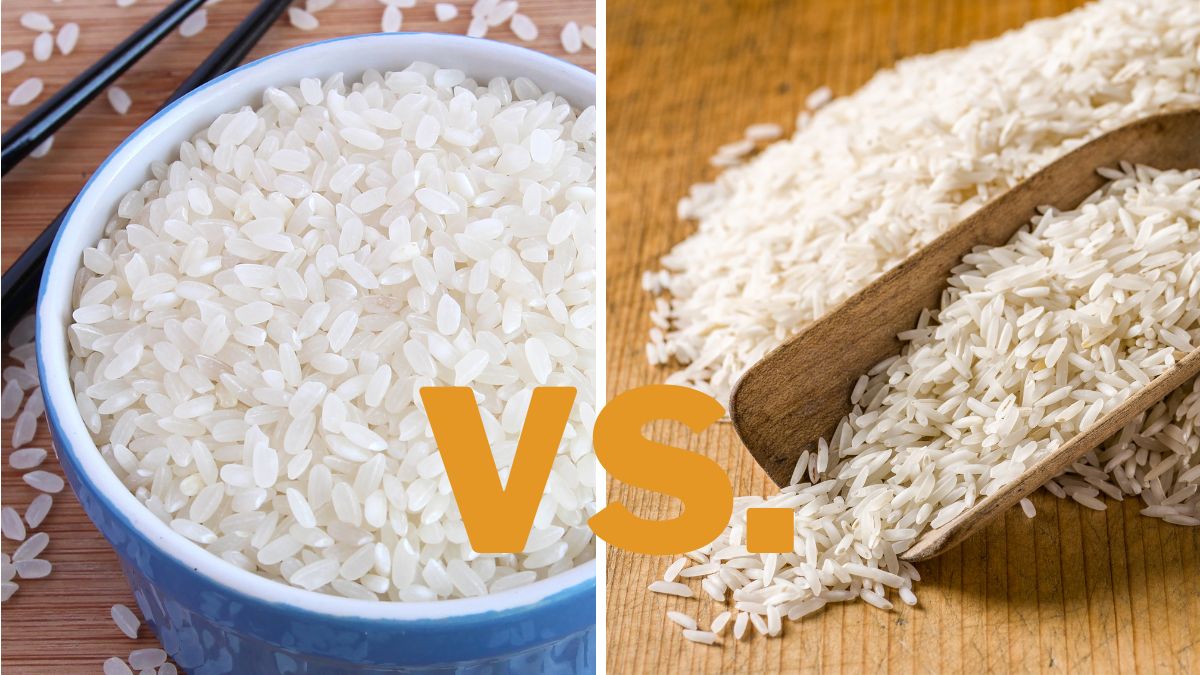Calrose Rice vs. Basmati: Differences & All You Need to Know

As a huge rice lover, the type of rice makes a very big difference for me when it comes to making a rice-based dish. You don’t have to be a rice expert to know what you like or don’t like, but you do need to know which rice serves which purpose if you want a delicious rice dish. Calrose rice and Basmati are two of the many types of rice and are excellent examples of the different types of rice suited for different purposes. So, what are the differences between Calrose and Basmati rice?
Calrose and Basmati rice primarily differ in flavor, texture, and cooking methods. While Calrose rice is sticky and chewy, Basmati rice is light and fluffy with separate grains.
Cooking Basmati rice instead Calrose or vice versa can become a colossal mistake, and trust me when I say it can create a disaster in the kitchen, on the plate, and in your mouth. I learned that lesson the hard way, and in this article, I will share the differences between these two types of rice to save you the disappointment I went through.
Flavor and Uses
Calrose rice and Basmati rice have very different flavors. While Calrose rice is mild and discretely sweet, Basmati is nutty and quite aromatic.
Calrose rice is somewhat neutral-flavored, making it a good option for dishes where you want it to have a more supportive role. At the same time, the other ingredients are the star of the dish. Due to its mild flavor tones, Calrose rise is a very versatile ingredient used in a variety of cuisines, from Japanese sushi to Mexican rice bowls.
On the other hand, Basmati rice has a very noticeable nutty flavor with an aroma combining popcorn and jasmine. Its flavor and aroma make Basmati rice a beloved choice for dishes like biryanis, pilafs, and curries, and it is especially used in Indian and Middle Eastern cuisines.
In a nutshell, which one you choose depends on the dish and your personal preference. If you want neutral-tasting rice that won’t compete with other flavors in your dish, Calrose rice should be your choice. Basmati rice is the way to go if you want flavorful and aromatic rice.
Texture

The texture is another aspect in which Basmati and Calrose differ and in which they are complete opposites. Calrose rice is a medium-grain rice with a sticky and slightly chewy texture. On the other hand, Basmati rice is a long-grain rice with a light and fluffy texture with separate grains.
The texture of Calrose rice results from its higher starch content, giving it a sticky texture when cooked. Basmati rice has a lower starch content allowing the grains to remain separate and fluffy when cooked.
Cooking Methods
If there is one aspect where you absolutely need to know what you are doing, it is the cooking method of both Basmati and Calrose rice. Due to their different starch concentrations, these two types of rice require different treatments when cooking them.
You can cook Calrose rice using a variety of methods, such as boiling, steaming, and with a rice cooker since it is usually used as a side dish, all methods that result in softening the rice without anything special done to it.
Basmati rice does best when cooked using a pot on the stovetop or a rice cooker. When cooking your Basmati rice on the stove, it is crucial to bring the water to a boil, add the rice, and then reduce the heat and cover the pot to allow the rice to cook. Do not pour the rice into the water before it boils because it will result in an overly sticky lump of rice.
To enhance their flavor, you can season Calrose rice and Basmati rice with salt, butter, or other seasonings.
